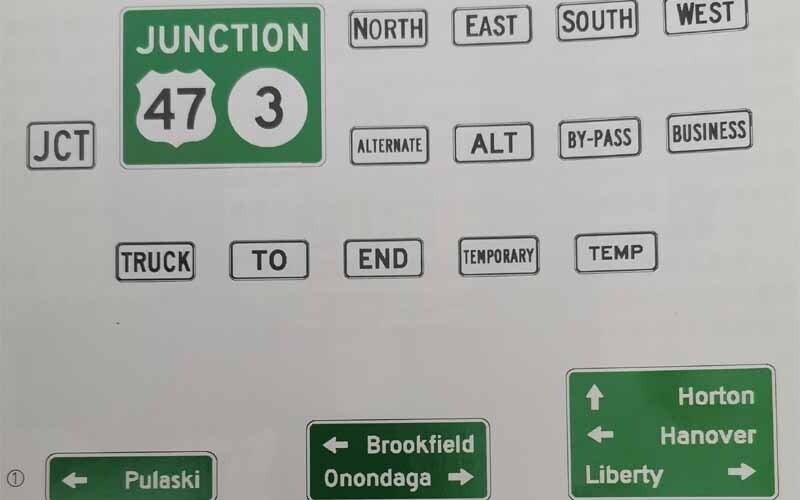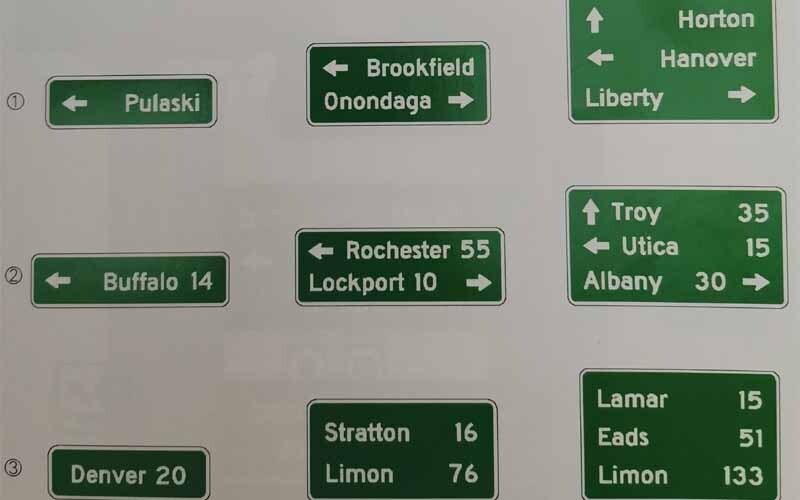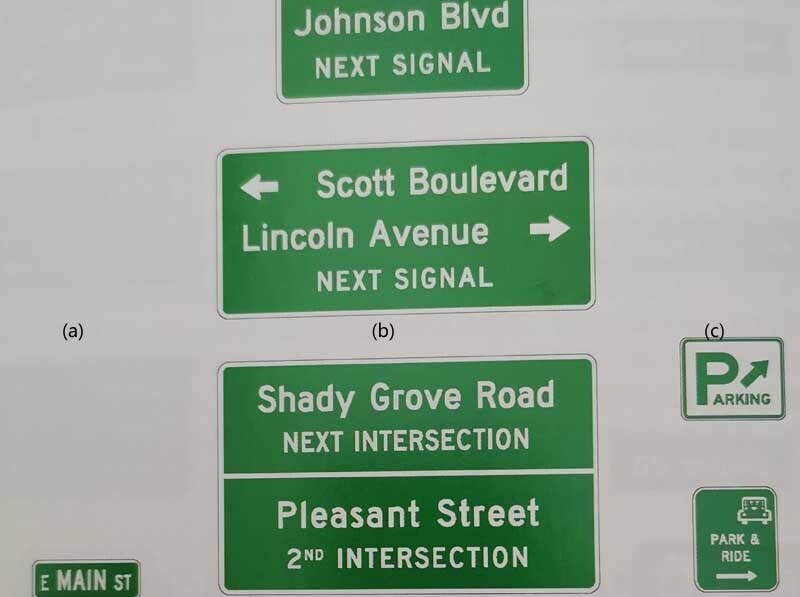Mingsheng Aluminum Sheet Home > faq > Aluminum Alloy > U.S. road sign definitions and stop signs
U.S. road sign definitions and stop signs
Author:Aluminum Sheeting for Trailers_Aluminum Trailer Siding Sheets_Mingsheng Aluminum Update time:2025-04-11 08:05:01In the United States, wayfinding signs are usually placed on all roads except low-traffic roads. Wayfinding signs convey essential traffic information to road users to ensure the easiest, most direct way to reach cities, towns, or other important destinations and to identify nearby rivers, parks, forests, places of interest, and other important sites. Low-volume roads are roads constructed outside of cities, municipalities, and communities that have an AADT of less than 400 vehicles per day and do not include freeways, expressways, interchange ramps, roads that connect to freeways, or roads in the state road system. Low-traffic roads usually serve regional traffic, and users are very familiar with the roads, so there is generally no need to set up wayfinding signs, and when they do need to be set up, the name of the location should be the focus of the instructions, such as campgrounds, recreation areas, and so on, should be given clear instructions. In the U.S.A., the setting of wayfinding signs is based on the Manual on Uniform Traffic Control Device, which divides wayfinding signs into two parts: general roads and highways and expressways according to the level of the road where they are located. The following will be combined with the relevant provisions of the manual to introduce the installation of signs in the United States.
2.1.1 Road Numbering System
In order to identify different routes and facilitate travel and management, the U.S. adopts a unified road numbering system, which is divided into four levels: interstate, national, state and county. Interstate roads and national highways are numbered by the U.S. Highway and Transportation Administration (HTSA), while state and county road systems are numbered by the relevant departments of each state. The roadway systems are assigned the following order of priority: interstate, national, state, and county, and are listed in top-to-bottom, or left-to-right, order when performing signage design. Different roadway systems use different forms of roadway signage, distinguished primarily by shape and color.State Business Routes generally refer to streets and roads within a city, which are numbered in the same manner as the interstate, national, or state roadways that connect to them, but with the addition of the word “business”. The numbering of business routes guides users in and out of urban areas, and in large cities, highway names may be shown on signs, but only if they are well known and would otherwise provide confusing information to road users.

1. Auxiliary Signs
Auxiliary signs are generally set above the route numbering signs and are color coordinated with the primary signs. There are various types of auxiliary signs, such as: intersection auxiliary signs, conveying a short message “JCT”, or combined with the route number sign, in the layout above the display of “JUNCTION”, the color of the white letters on a green background; Direction auxiliary signs, mainly conveying the direction of travel of the route (east, south, west, north), and EAST . SOUTH . WEST, NORTH, the first letter of the first letter enlarged by 10%, in order to improve the recognizability.

2. Destination and distance signs in addition to road users to convey the route number and driving direction information, but also must convey the route to reach the destination and distance information, which is the destination and distance signs play an important role. This kind of sign is a rectangular sign with a white pattern on a green background, and the destination information conveyed includes the names of cities and towns or other traffic attraction points. Destination and distance signs are categorized into three forms.
①. The ② form is characterized by the fact that it is usually set in front of an intersection, and the sign has a directional arrow pattern, which must be set to the far right of the layout if it is a right-pointing arrow, or to the far left of the layout if it is a left-pointing arrow. The destination information conveyed is coordinated with the advance warning sign ahead, generally no more than four messages, if multiple destinations for the same direction of the information is shared by a common directional arrow, and the closest distance to the destination information at the top of the group. The second form adds a distance figure to the destination, generally in miles, and the distance figure is uniformly set to the right of the destination name.
The third form is characterized by the fact that it is usually set at the rear of an intersection, so that drivers can easily confirm the destination and know how much distance is left. The destination information conveyed is generally no more than three, and if there are more related destinations, they are filtered according to the amount of traffic they attract. The distance to the destination is displayed on the right side of the destination information, and the destinations and distance information are arranged from top to bottom in order of proximity and distance.

3. Street Name Signs
Street name signs are divided into two types: street name signs for the current intersection and street name preview signs for the intersection ahead. ( a ) for the current intersection of the street name signs, required to be set in the urban area of all intersections, and so that all directions of the inlet road can be clearly seen. Information on the sign may include the type of street (street, boulevard, roadway) and location in the City, e.g., south, north, etc. ( b ) Street name advance warning signs for intersections ahead, generally advising of the next or second intersection, are required to be prominently displayed so that drivers are aware of the roadway ahead and can take timely action such as slowing down and changing lanes. In urban areas, street name advance warning signs are required at all major intersections, unless the distance between two intersections is too close and there is no suitable location for advance warning signs.
4. Parking Signs
There are also two types of parking signs. The green pattern sign on white background is the parking lot directional sign, which conveys the message of PARKING and directional arrows, in which the letter P is five times higher than other letters. Parking lot wayfinding signs are generally placed on major roadways closer to parking lots to indicate in advance the direction of travel to nearby public parking lots, but not more than four blocks in advance for advance notice. Park & Ride wayfinding signs are white on green and convey the message PARK & RIDE and a directional arrow, with the parking facility's logo displayed on the upper portion of the sign. Depending on the functional orientation of the parking facility, local transportation department signage will be provided if it is used for public transportation, a park-and-ride fixed signage will be provided if it is used for carpooling, and both signage will be required if it is used for a combination of both functions.

Article Categories
New Article
Contact Us
Contact:Maddy
Add:No. 162 Jinbai Road, Zhengzhou City, Henan Province, China
